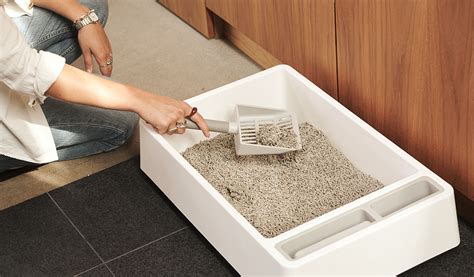Introduction
Cat owners are constantly faced with the task of choosing the ideal cat litter for their feline friends. With various options available, the debate between tofu cat litter and clay litter has gained significant traction. To help cat owners make an informed decision, this article will delve into the pros and cons of both tofu and clay litter, exploring their unique characteristics and how they can impact the well-being of cats.

Tofu Cat Litter: Pros and Cons
Pros:
- Biodegradable and Eco-Friendly: Tofu litter is made from tofu byproducts, rendering it biodegradable and environmentally sustainable. It can be safely composted or flushed down the toilet, making disposal a breeze.
- Excellent Odor Control: Tofu litter boasts exceptional odor absorption capabilities due to its naturally porous structure. It effectively neutralizes unpleasant scents, creating a fresher and healthier environment for both cats and owners.
- Soft and Gentle on Paws: The soft texture of tofu litter is gentle on cats’ paws, preventing irritation or discomfort. This is especially beneficial for sensitive cats or those prone to paw problems.
Cons:
- Price Point: Tofu litter tends to be more expensive than clay litter, which may be a consideration for budget-conscious cat owners.
- Moisture Retention: While tofu litter absorbs odor effectively, it can retain moisture for longer periods. This may require more frequent litter box cleaning to prevent excessive clumping and odor buildup.
- Tracking: Tofu litter particles are less dense than clay litter, which can lead to tracking outside the litter box. Owners may need to vacuum or sweep more frequently to manage stray litter.
Clay Cat Litter: Pros and Cons
Pros:
- Cost-Effective: Clay litter is generally more affordable than tofu litter, making it a budget-friendly option for cat owners.
- Effective Clumping: Clay litter is highly absorbent and clumps tightly around urine, making it easy to scoop and remove. This clumping action prevents odor from escaping and minimizes the need for frequent litter changes.
- Low Tracking: Clay litter is denser than tofu litter, reducing the likelihood of tracking beyond the litter box. This can be beneficial for homes with hardwood floors or high-traffic areas.
Cons:
- Environmental Impact: Clay litter is not biodegradable and can pose environmental concerns when disposed of in landfills. It may also contribute to dust pollution if not properly handled.
- May Be Irritating to Paws: The rough texture of clay litter can irritate some cats’ paws, particularly those with sensitive skin. It is important to observe your cat’s reaction to clay litter to ensure their comfort.
- Heavy and Bulky: Clay litter is heavier and bulkier than tofu litter, making it more challenging to transport or lift. This can be inconvenient for owners with physical limitations or who live in smaller spaces.
Which Litter is Right for You?
The choice between tofu and clay litter ultimately depends on the individual needs and preferences of the cat owner. Consider the following factors:
- Budget: Tofu litter is more expensive than clay litter, so budget constraints may influence your decision.
- Environmental Concerns: If you prioritize sustainability, tofu litter’s biodegradable nature is a clear advantage.
- Cat’s Sensitivity: If your cat has sensitive paws, tofu litter’s soft texture may be a better choice.
- Odor Control: Both tofu and clay litter provide effective odor control, but tofu litter may have an edge in this aspect.
- Tracking: If minimizing litter tracking is a priority, clay litter’s low-tracking formula may be preferable.
Future Trends and Innovations
The cat litter industry is constantly evolving, with new innovations emerging to meet the changing needs of cat owners. Here are some future trends and advancements to watch for:
- Self-Cleaning Litter Boxes: Automated litter boxes that scoop and dispose of waste automatically, reducing the need for manual cleaning.
- Biodegradable and Flushable Litters: Continued advancements in biodegradable and flushable litter formulas to enhance sustainability and convenience.
- Odor-Resistant Coatings: Innovations in litter box linings or treatments that prevent odor from permeating through the plastic container.
- Multifunctional Litters: Litters that combine multiple benefits, such as odor control, moisture absorption, and clumping, to create an optimal litter environment.
Conclusion
The choice between tofu cat litter and clay litter is a matter of personal preference and the specific needs of your cat. Both options offer unique advantages and disadvantages, and understanding these characteristics will help you make the best decision for your furry friend’s comfort and well-being. As the cat litter industry continues to innovate, expect new and improved products that cater to the evolving needs of cats and their owners.





















